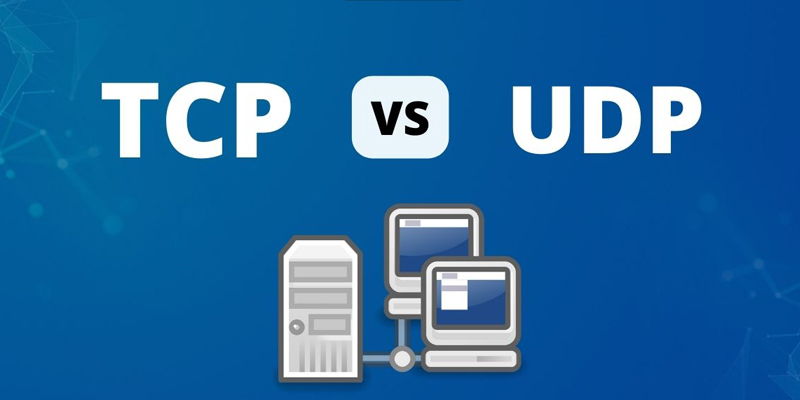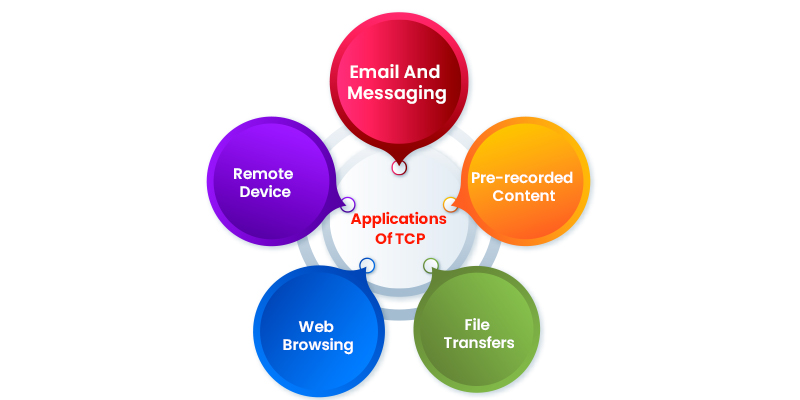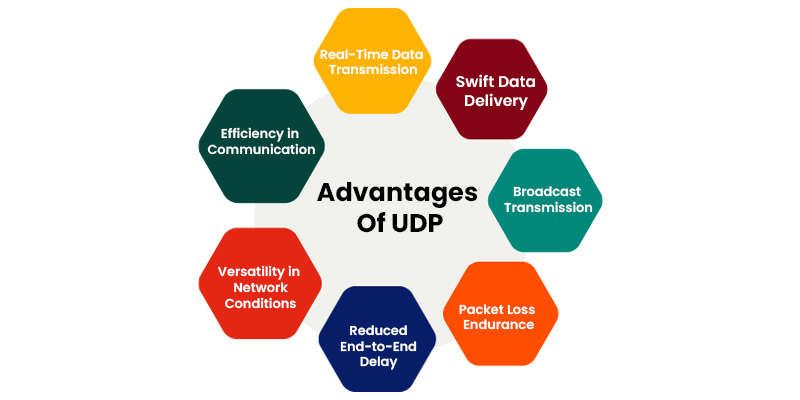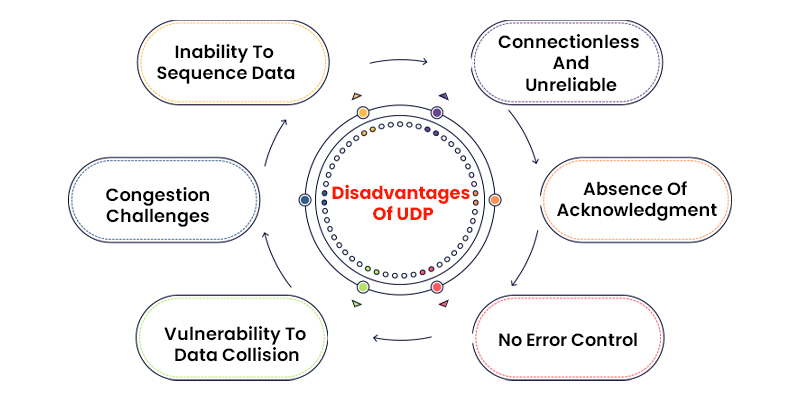
Internet traffic involves numerous data transfers between servers and devices, and these transfers rely on two key protocols: TCP (Transmission Control Protocol) and UDP (User Datagram Protocol). Both protocols have strengths and weaknesses, providing users with options to enhance their browsing experience. Understanding the distinctions between TCP and UDP is crucial for optimising data transmission. Additionally, users are advised to incorporate a VPN (Virtual Private Network) to ensure the security of their online data exchanges. If you're interested in networking technologies, you might consider exploring a CCNA Course in Chennai.
TCP vs UDP: Differences Between The Protocols
Let's examine What is TCP,The primary distinction between TCP (Transmission Control Protocol) and UDP (User Datagram Protocol) lies in their connection characteristics. TCP features a connection-based protocol, offering reliability in data transfer but at a slower pace. On the other hand, let's check out What is UDP, UDP is a connectionless protocol, prioritising speed over reliability. Each protocol is suitable for different types of data transfers, as they are governed by rules that dictate how data is formatted and transmitted across a network. Both TCP and UDP serve the common purpose of facilitating data transfer over the internet, enabling communication between servers and devices for activities like emailing, streaming, gaming, and web browsing.
TCP establishes a secure communication line to ensure the dependable transmission of all data. It verifies the receipt of messages to confirm the successful transfer of data.
In contrast, UDP does not establish a connection when transmitting data. It sends data without confirming receipt or checking for errors, which may result in the loss of some or all data during transmission.
Which Protocol is Better: TCP or UDP?
The choice between TCP (Transmission Control Protocol) and UDP (User Datagram Protocol) depends on the specific online activity and the nature of the data being transferred. UDP is preferable for online gaming due to its rapid data transfer, contributing to a mostly lag-free gaming experience. On the other hand, TCP is more suitable for tasks like transferring files, such as family photos, as it ensures that the data arrives exactly as it was sent.
TCP and UDP are both valuable protocols, and framing it as a competition between TCP vs UDP can be misleading, Check out FITA Academy for more in depth details related to the foundational pillars of the internet. The decision between them depends on the type of data transfer. Examples of scenarios where each protocol excels include:
TCP is Best For:
- Email or texting
- File transfers
- Web browsing
UDP is Best For:
- Live streaming
- Online gaming
- Video chat
For a detailed analysis of the advantages and disadvantages of TCP and UDP, refer to the breakdown below:
Transmission Control Protocol (TCP) stands out as the protocol of choice when prioritising maximum reliability and data quality. While it may not be the fastest option, TCP features ensure that the job is done accurately.
Here are Some Advantages of The TCP Protocol:
- Connection Setup and Maintenance: TCP establishes and maintains a connection between the sender and receiver.
- Operating System Independence: It operates independently of the operating system.
- Support for Routing Protocols: TCP supports various routing protocols.
- Error Checking: It checks for errors, ensuring data arrives at its destination unaltered.
- Confirmation of Data Arrival: TCP confirms data arrival after delivery or attempts retransmission.
- Sequencing of Data: It can send data in a specific sequence.
- Optimisation of Transmission Pace: TCP optimises the pace of data transmission based on the receiver.
However, TCP features come with certain disadvantages, particularly in scenarios requiring faster speeds.
Here are Some Drawbacks of TCP Packet Transmission:
- Higher Bandwidth Usage: TCP utilises more bandwidth and is slower than UDP.
- Slow Initial Transfer: It tends to be slow at the beginning of a file transfer.
- Loading Delays: In some cases, it can cause delays in loading data, such as images on a web page, until all page data is delivered.
- Reduced Transfer Rate in Congested Networks: TCP reduces its transfer rate in network congestion, resulting in slower speeds.
- Not Suited for LAN and PAN Networks: It is not well-suited for Local Area Network (LAN) and Personal Area Network (PAN) environments.
- No Multicast or Broadcast: TCP cannot multicast or broadcast.
Despite its slower speeds, the Transmission Control Protocol is the preferred protocol when reliability is paramount, as it is the only protocol capable of retransmitting lost data packets. If you're interested in mastering networking protocols and expanding your expertise in this field, you might consider pursuing a CCNA Certification In Bangalore.
Applications Of TCP

TCP, or Transmission Control Protocol, proves instrumental in optimising various online activities, warranting its activation under specific scenarios. While the default protocol selection typically aligns with optimal performance, there are instances, such as within VPN configurations, where manual protocol selection becomes imperative to enhance the overall browsing experience. Enable TCP features in the following contexts.
Email and Messaging
Ensure the reliable and secure transmission of emails and text messages by activating TCP, enhancing the robustness of data transfer in communication channels.
Streaming of Pre-recorded Content
Elevate the streaming experience on platforms like Netflix, Hulu, or HBO Max by enabling TCP, contributing to the seamless delivery of pre-recorded multimedia content.
File Transfers Across Applications and Devices
Facilitate efficient and error-resilient file transfers between applications and devices through the activation of TCP, ensuring the integrity and completeness of data exchanges.
General Web Browsing
Optimise the overall web browsing experience by employing TCP, particularly in scenarios where the automatic protocol selection may not suffice, enhancing the reliability and speed of data retrieval.
Remote Device or Network Administration
Empower remote device or network administration tasks with the stability and security afforded by TCP, ensuring a resilient connection for efficient management and oversight.
Advantages and Disadvantages of UDP
Advantages of UDP

- Swift Data Delivery
UDP facilitates rapid data delivery without the need for establishing and maintaining a connection, leading to faster operation of applications and operating systems.
- Broadcast and Multicast Transmission
UDP supports broadcast and multicast transmission, enabling a single transmission to efficiently reach multiple recipients simultaneously. If you're interested in delving deeper into networking protocols and enhancing your knowledge in this domain, you might find it beneficial to pursue a CCNA Certification in Coimbatore.
- Packet Loss Endurance
UDP persists in delivering data even in the presence of packet loss, ensuring continuous data flow even if incomplete.
- Reduced End-To-End Delay
With smaller packet size and less overhead, UDP minimizes end-to-end delay, contributing to efficient and timely data transmission.
- Versatility In Network Conditions
UDP operates effectively across a broader range of network conditions compared to TCP features, making it adaptable to various connectivity scenarios.
- Efficiency In Communication
UDP communication is inherently more efficient due to its connectionless nature and reduced protocol overhead.
- Real-Time Data Transmission
Well-suited for applications requiring live and real-time data, such as live streaming, video calling, and matching servers with IP addresses.
Disadvantages of UDP

- Connectionless and Unreliable
The lack of connection in UDP makes data transfer unreliable, as there is no mechanism to ensure successful and error-free delivery.
- Absence of Acknowledgment
UDP lacks a system to acknowledge successful data transfers, making it challenging to confirm if data is delivered in its original state or at all.
- No Error Control
Without error control, UDP drops packets upon detecting errors, potentially leading to incomplete or corrupted data transmission.
- Vulnerability to Data Collision
Routers may prioritise TCP packets over UDP in case of data collisions, resulting in dropped UDP packets.
- Congestion Challenges
Multiple users accepting UDP data can cause congestion, and there is no built-in mechanism to mitigate or manage this congestion.
- Inability to Sequence Data
UDP does not sequence data, allowing it to arrive in any order or out of order, which may pose challenges in applications requiring sequential data.
Applications Of UDP
- Online Gaming
UDP is well-suited for online gaming, ensuring a steady flow of live data to keep the gaming experience smooth despite potential errors or data loss.
- Multicasting
Applications that involve multicasting, where data needs to be efficiently distributed to multiple recipients, benefit from UDP's broadcast and multicast capabilities.
- Video Chatting / Conferencing
Real-time communication applications, such as video chatting or conferencing, leverage UDP to transmit live data efficiently.
- VoIP (Voice over IP)
In-app voice calling services, such as VoIP, utilise UDP for its speed and ability to transmit real-time voice data.
- Domain Name Systems (DNS)
DNS, responsible for translating domain names into IP addresses, often utilises UDP for its efficiency in quick data transmission.
How Does TCP Work?
Transmission Control Protocol (TCP) employs a "three-way handshake," a three-step process that establishes a connection between a device and a server. This process ensures a continuous and reliable connection, initiating the transfer of data packets across the internet, delivering them intact, and confirming their successful delivery. Here's a breakdown of how TCP features work:
- Client Sends SYN (Sequence Number): The client device initiating the data transfer sends a SYN to the server, indicating the sequence number from which the data packet transfer should commence.
- Server Sends SYN-ACK: The server acknowledges the client's SYN by sending its own SYN number. This step is known as SYN-ACK (SYN acknowledgement).
- Client Acknowledges SYN-ACK: The client acknowledges the server's SYN-ACK, establishing a direct connection and initiating the data transfer.
The connection between the sender and receiver is sustained until the successful completion of the data transfer. Each time a data packet is sent, an acknowledgement from the receiver is required. If no acknowledgement is received, the data packet is resent. In the event of an acknowledged error, the faulty packet is discarded, and a new one is sent. In cases of heavy traffic or other issues preventing data transmission, the connection is maintained, and the transmission is delayed rather than being severed. These controls within the TCP protocol ensure the guaranteed and successful delivery of data. If you're interested in gaining a comprehensive understanding of networking protocols, you might consider enrolling in a CCNA Course in Madurai.
How Does UDP Work?
User Datagram Protocol (UDP) operates by promptly dispatching data to the intended receiver without establishing a formal connection or agreement beforehand. Often referred to as a "fire-and-forget" protocol, UDP sends data to the recipient without a predetermined sequence, without confirming delivery, and without verifying if the packets arrived as intended.
In contrast to TCP features, which meticulously set up a connection through its "handshake" process before initiating data transfer, UDP prioritises speed by sending packets without engaging in an agreement with the receiver. In this scenario, it becomes the recipient's responsibility to interpret and make sense of the data received from UDP.
To Illustrate How TCP and UDP Operate, Consider This Analogy:
Imagine you're having lunch at the office, and a friend in a different cubicle asks for half of your sandwich. You have two options:
- TCP Approach (Reliable but Slow): You decide to walk through the maze of office desks to hand her the sandwich directly. This ensures a secure and guaranteed delivery, but it takes more time.
- UDP Approach (Fast but Unreliable): Alternatively, you choose to throw the sandwich into her cubicle from across the room. This method is faster, but there's a risk that the sandwich might not arrive in its original state—or it might not reach her at all.
In this analogy, the first method (TCP) prioritises reliability, while the second method (UDP) emphasises speed, even though the delivery may lack the same level of assurance. If you're interested in diving deeper into networking technologies, you might consider exploring a CCNA Course in Trichy.
